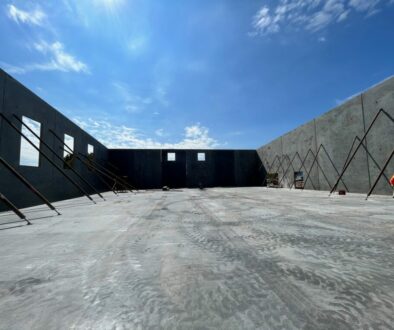Pros and Cons of Terrazzo Flooring
Terrazzo flooring is a versatile and durable flooring option that has been used for centuries. It is made by mixing small pieces of marble, granite, glass, or other aggregates into a cement or epoxy binder. The surface is ground and polished to create a smooth and visually appealing floor. Like any flooring material, terrazzo has its own set of advantages and disadvantages. We thought we’d share a few pros and cons that you’d want to consider.
Pros of Terrazzo Flooring:
- Durability: Terrazzo is incredibly durable and can last for decades (or even centuries) with proper maintenance. It is resistant to wear, scratches, and stains.
- Low Maintenance: Terrazzo flooring is relatively easy to maintain. Regular sweeping and occasional wet mopping are usually sufficient to keep it clean.
- Versatility: Terrazzo offers a wide range of design possibilities. You can customize the mix of aggregates and the color of the binder to achieve a variety of looks, from classic to contemporary.
- Aesthetics: Terrazzo is known for its timeless beauty and can add an elegant and sophisticated look to any space. It has a unique, speckled appearance that can be quite striking.
- Environmentally Friendly: Terrazzo can be considered an eco-friendly option because it often uses recycled materials as aggregates, and it has a long lifespan, reducing the need for replacement.
- Hypoallergenic: Terrazzo is a solid and non-porous surface, which means it does not harbor allergens like dust mites, making it a good choice for individuals with allergies.
Cons of Terrazzo Flooring:
- Cost: Terrazzo can be expensive to install compared to some other flooring options. The cost depends on factors like the type of aggregates used and the complexity of the design.
- Installation Complexity: Installing terrazzo is a specialized skill that requires experienced craftsmen. Improper installation can result in cracks or other issues.
- Coldness: Terrazzo can feel cold underfoot, especially in colder climates. However, there is the option of adding radiant heating.
- Hardness: While its hardness is a benefit in terms of durability, it can be uncomfortable to stand or walk on for extended periods of time. For this reason, it’s less ideal for spaces where people are on their feet for long hours.
- Susceptibility to Stains: While terrazzo is generally resistant to stains, some substances, especially acidic ones, can cause staining if not promptly cleaned.
- Requires Sealing: Terrazzo flooring needs to be sealed periodically to maintain its appearance and prevent staining. The frequency of sealing depends on the type of terrazzo and the level of foot traffic.
In summary, terrazzo flooring offers durability, low maintenance, and design versatility, but it can be costly to install and may feel cold and hard underfoot. When considering terrazzo for your flooring needs, it’s important to weigh the pros and cons against your specific requirements and budget. Additionally, proper installation and maintenance are essential to maximize the benefits of terrazzo flooring.
ShiremanConstruction.com


